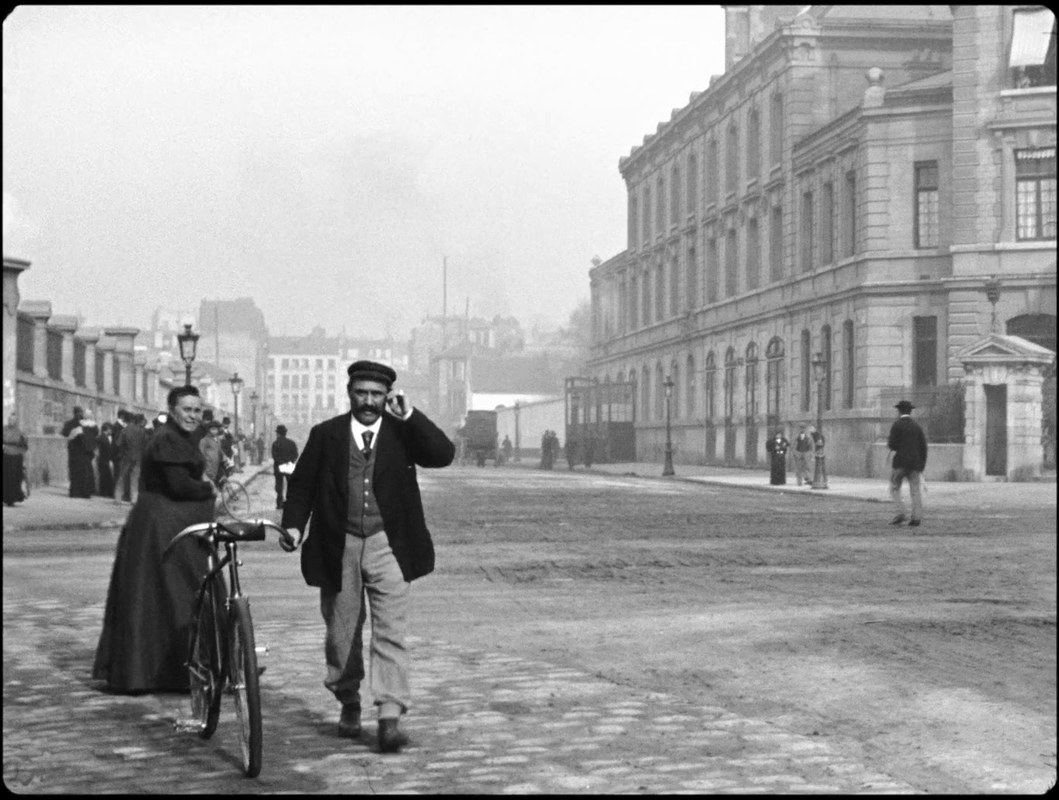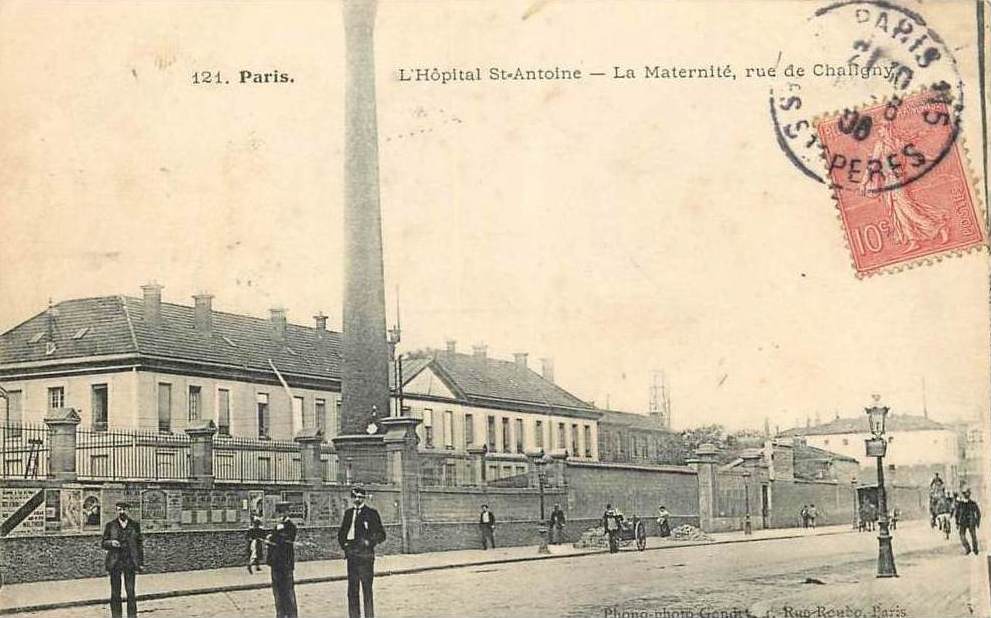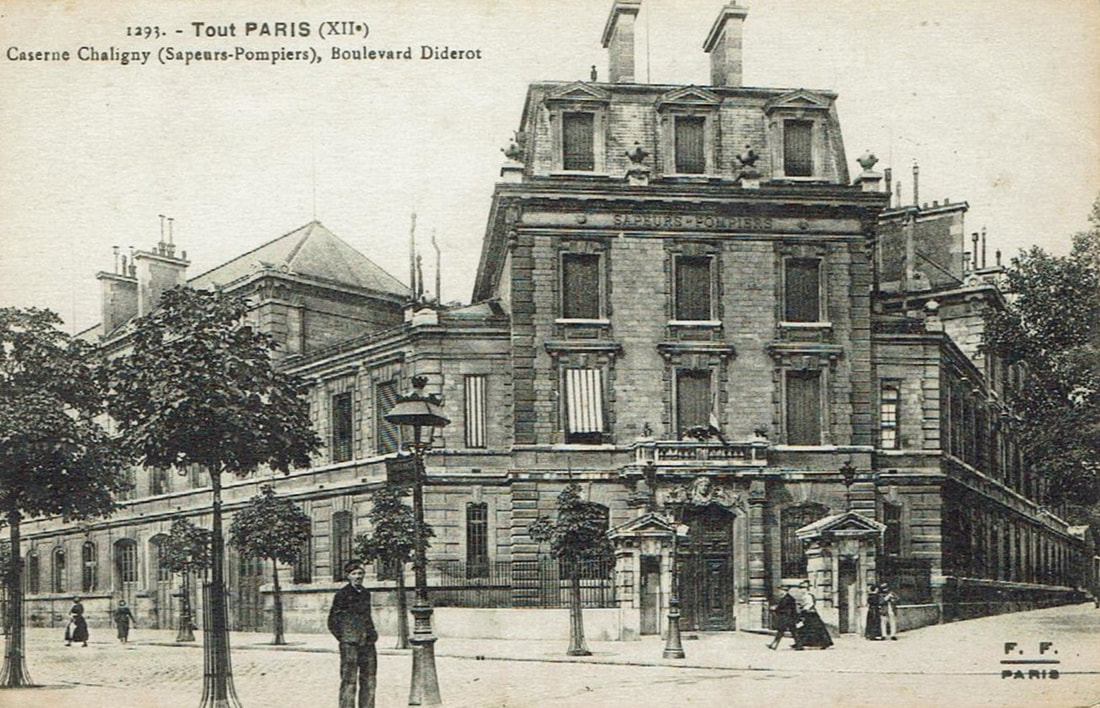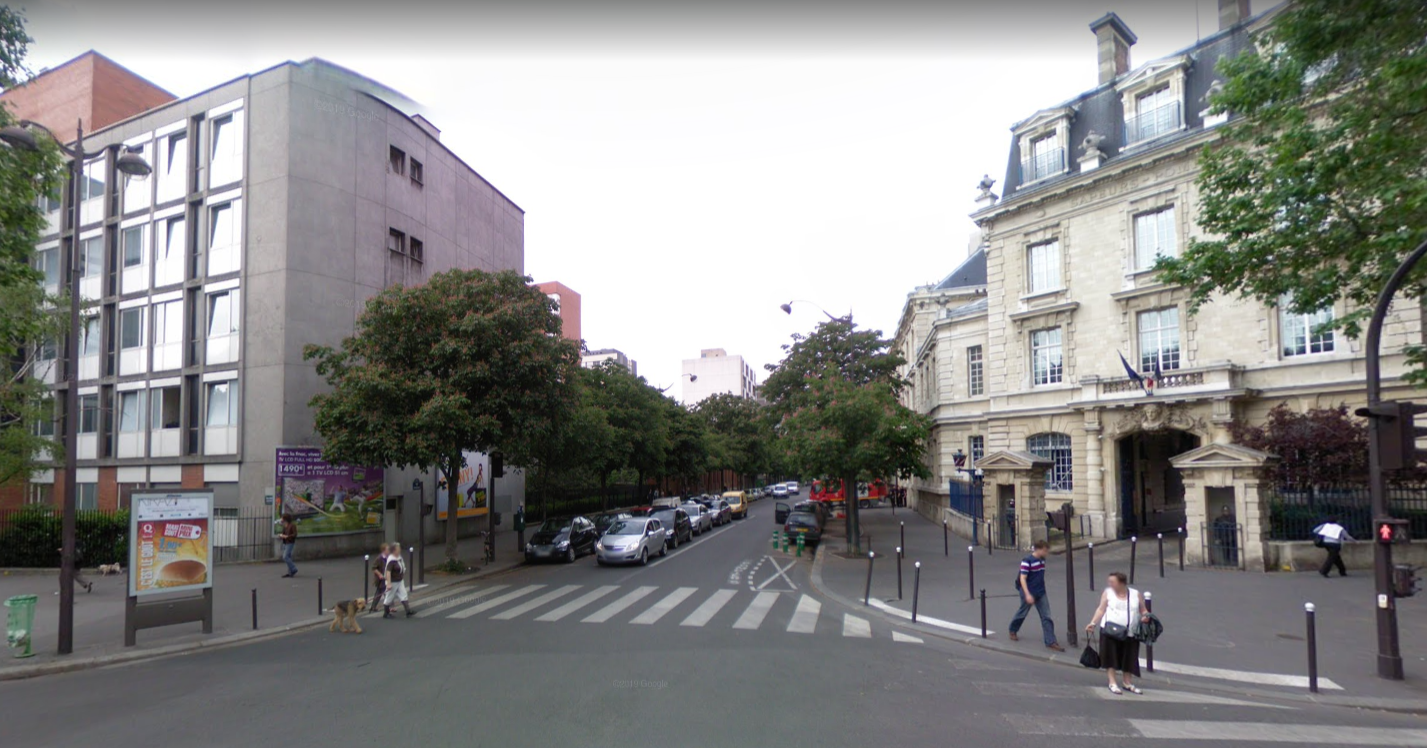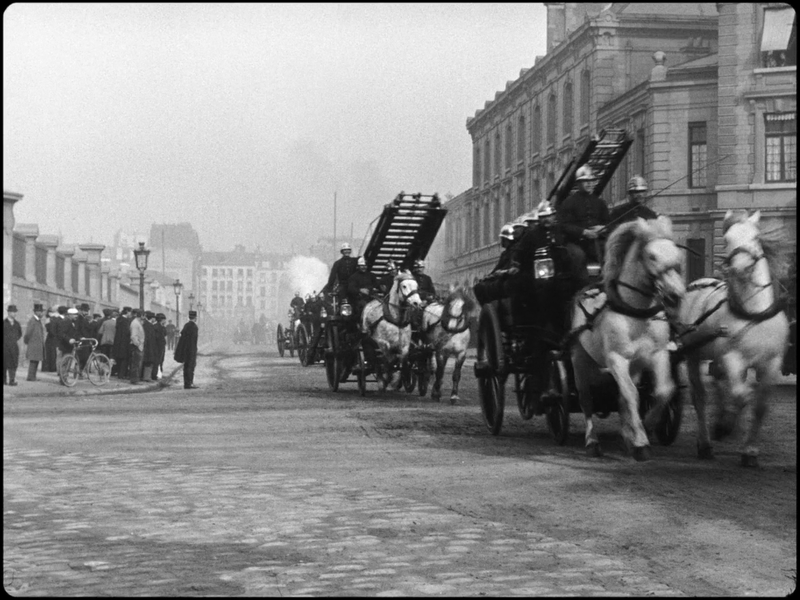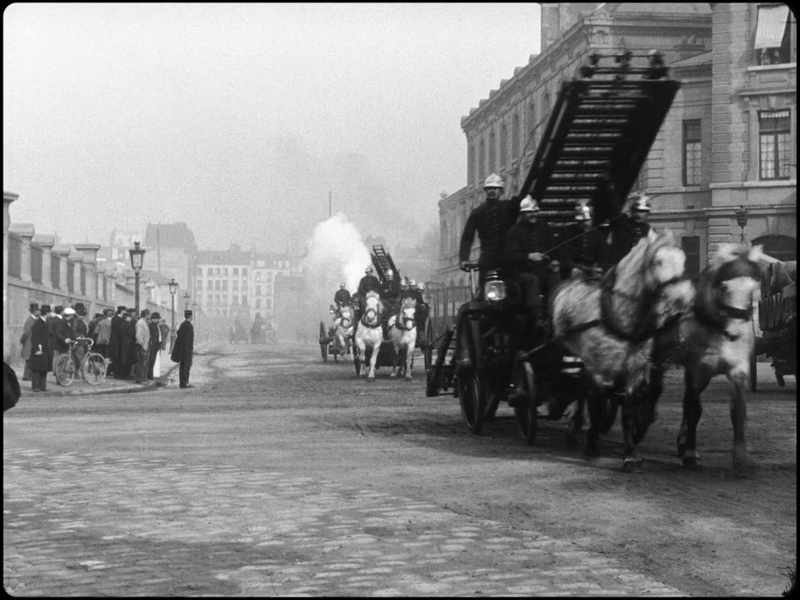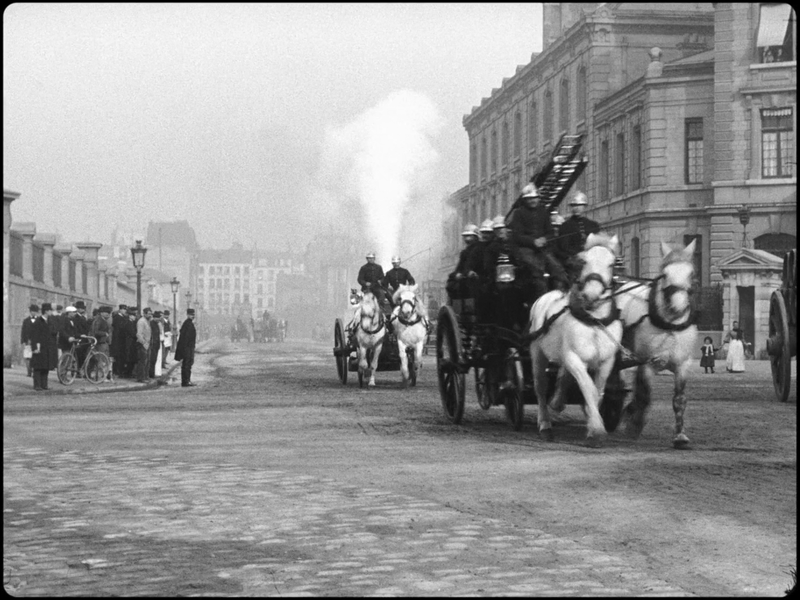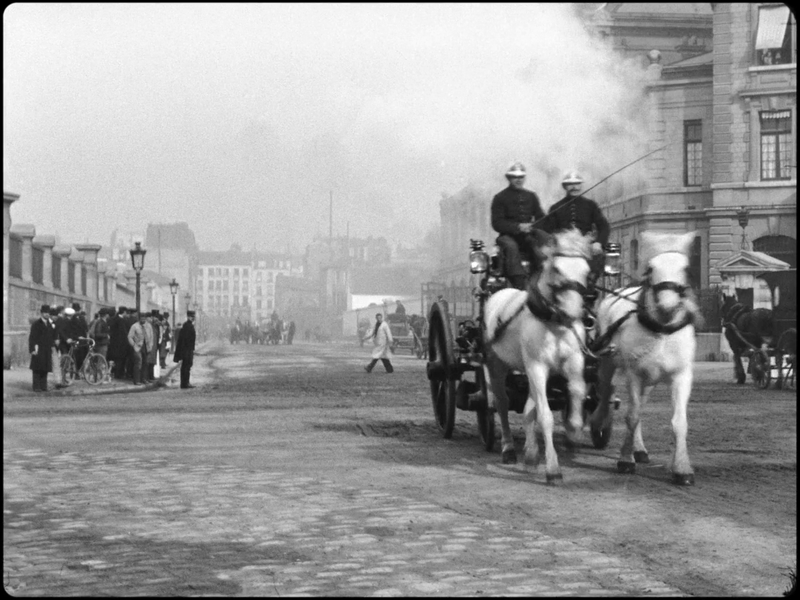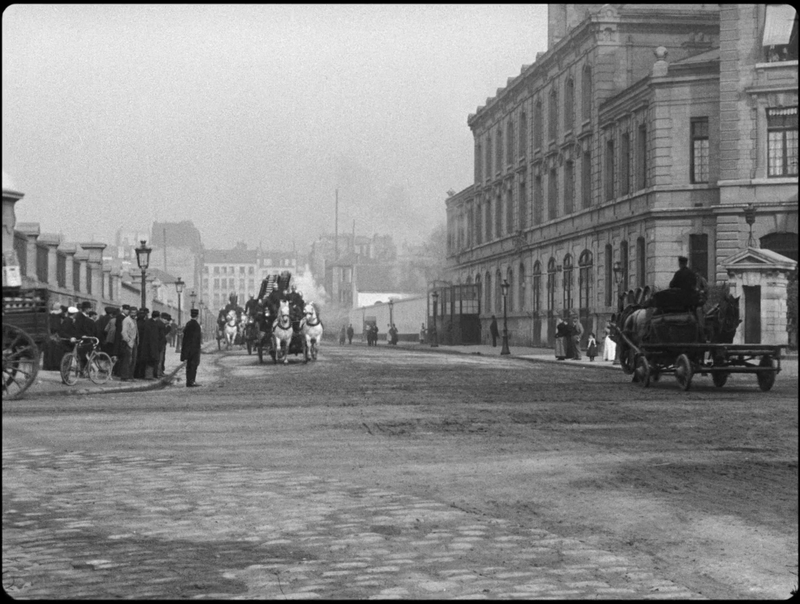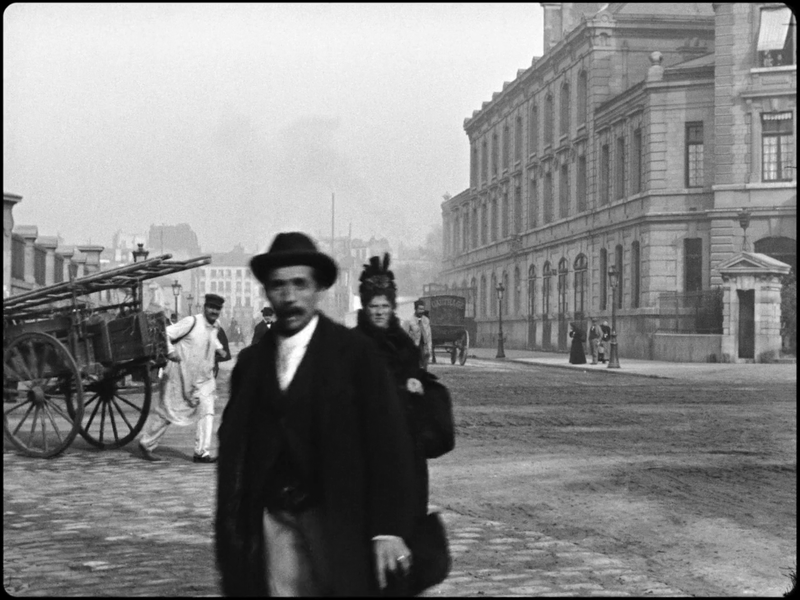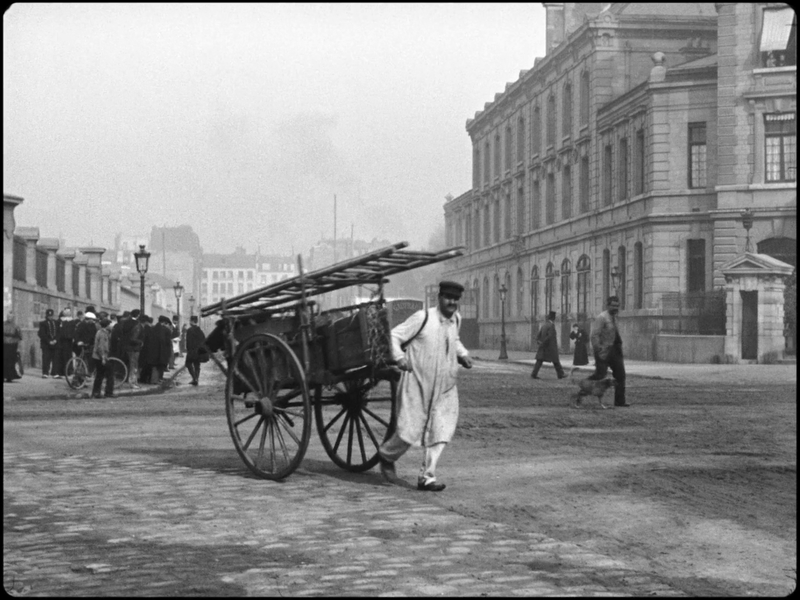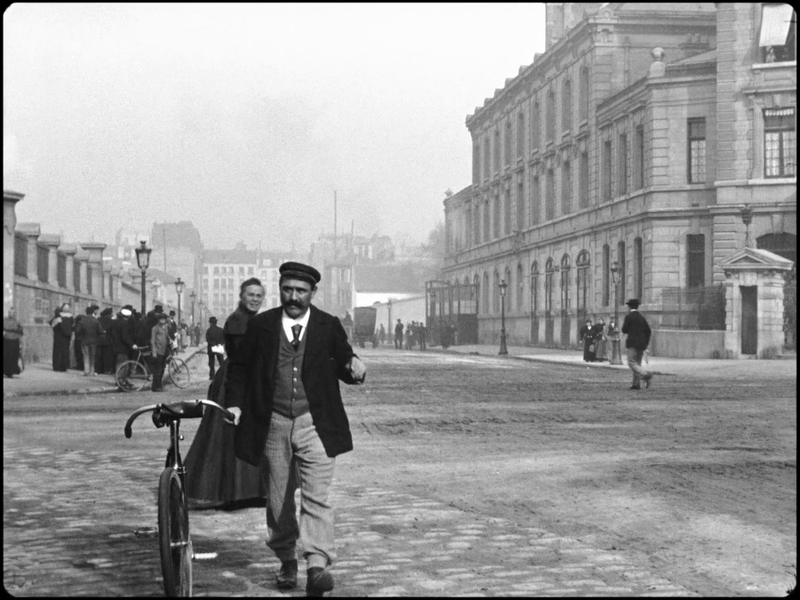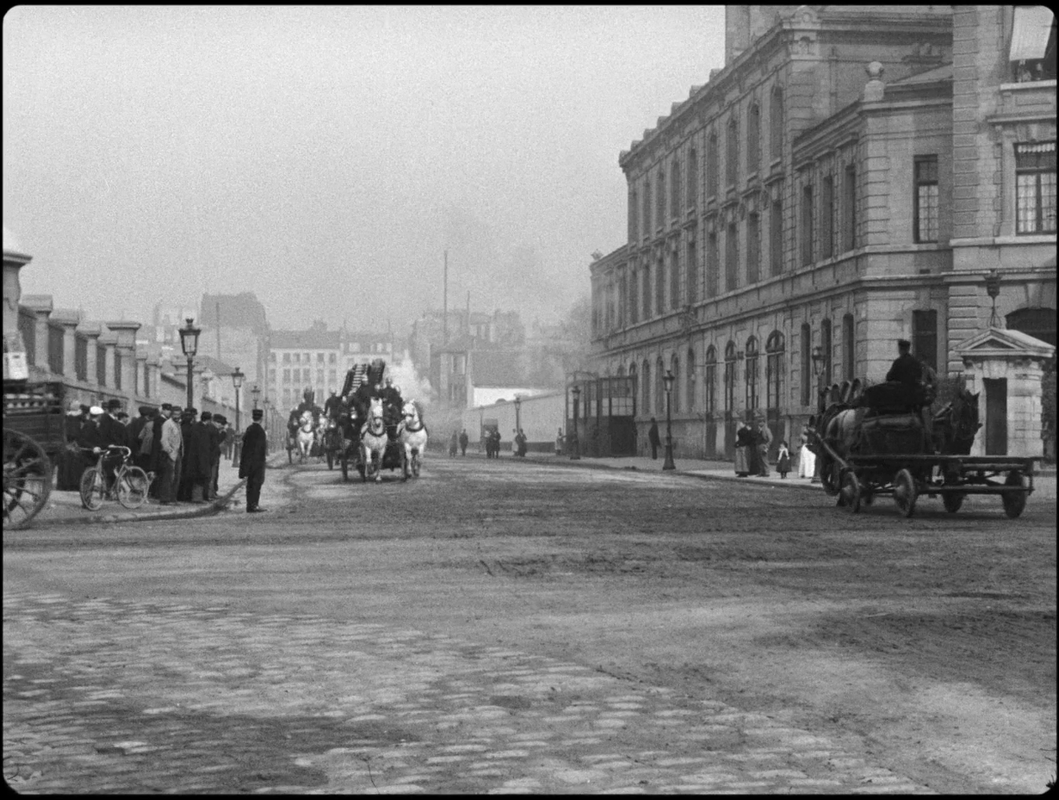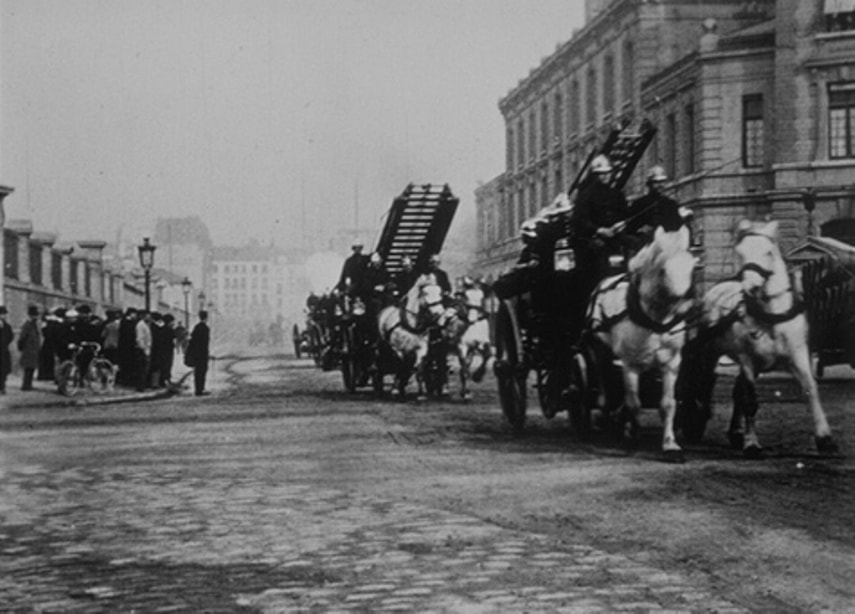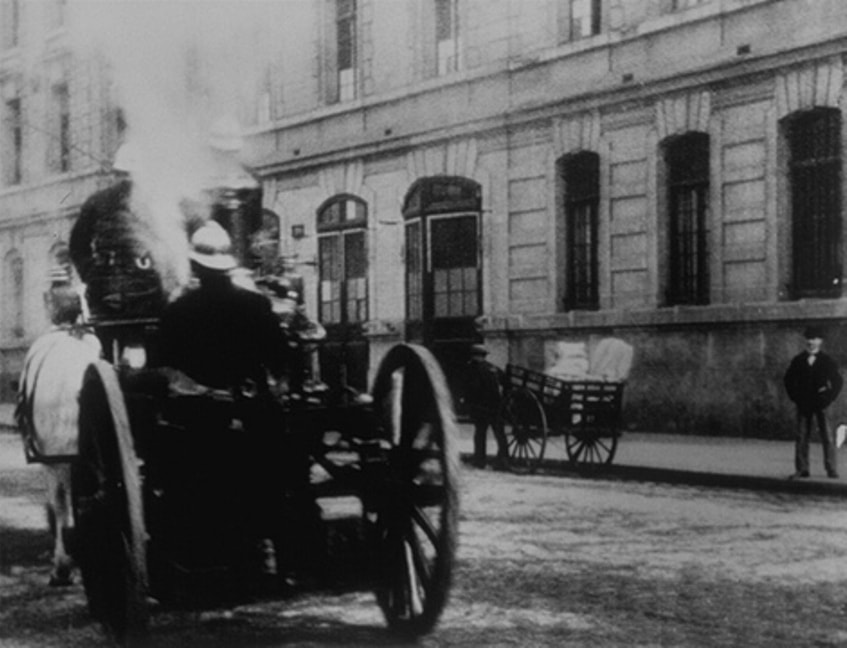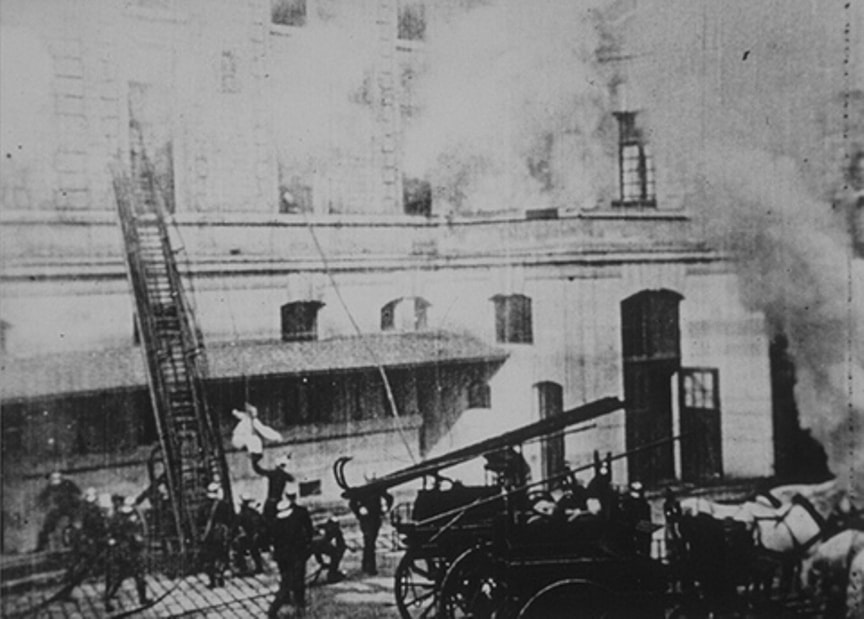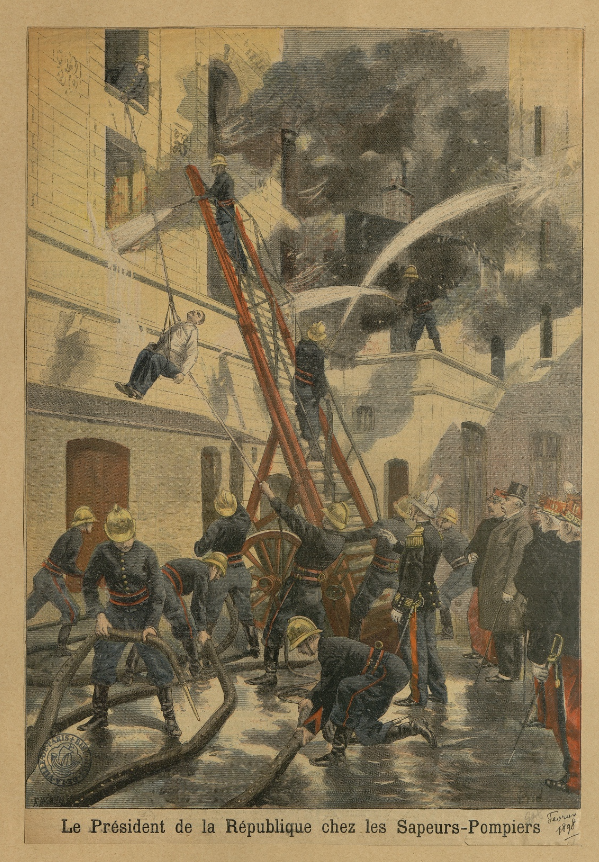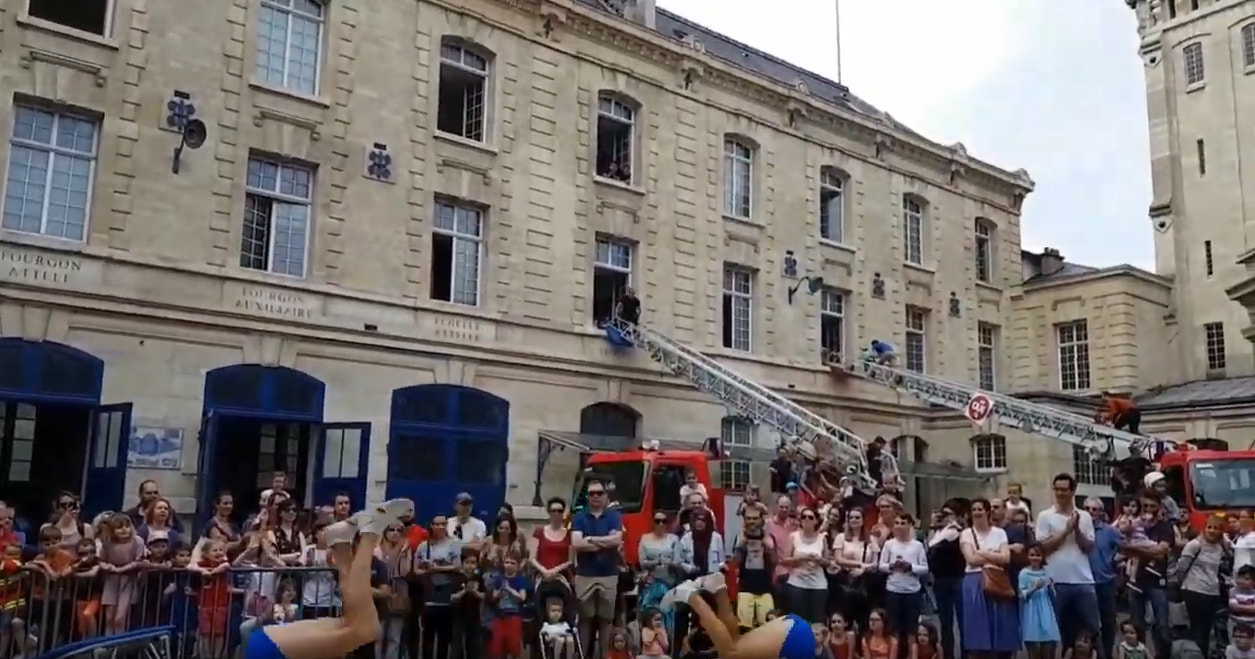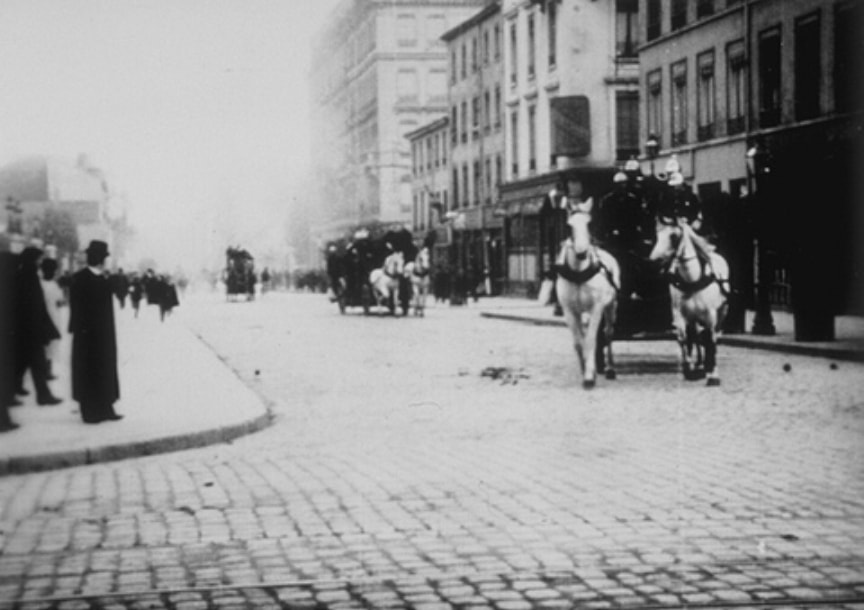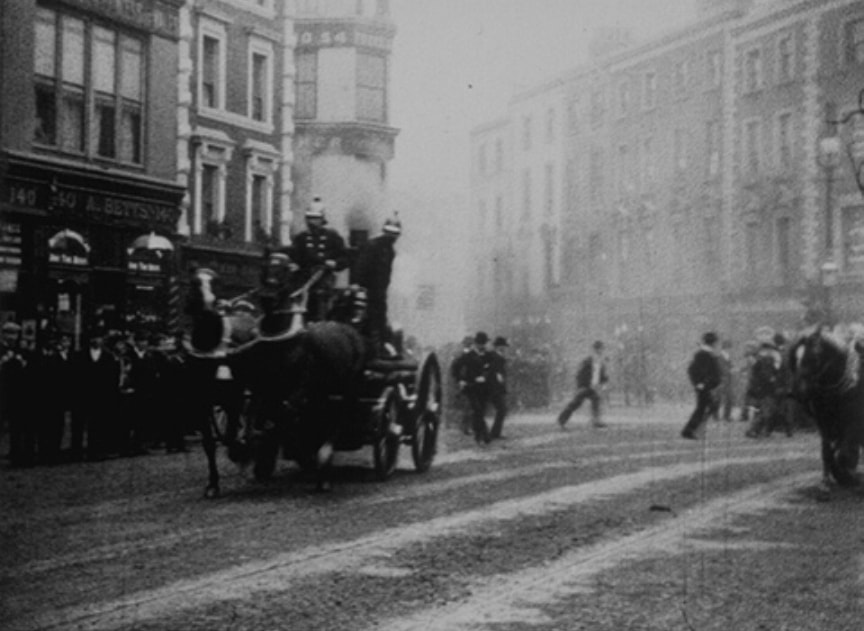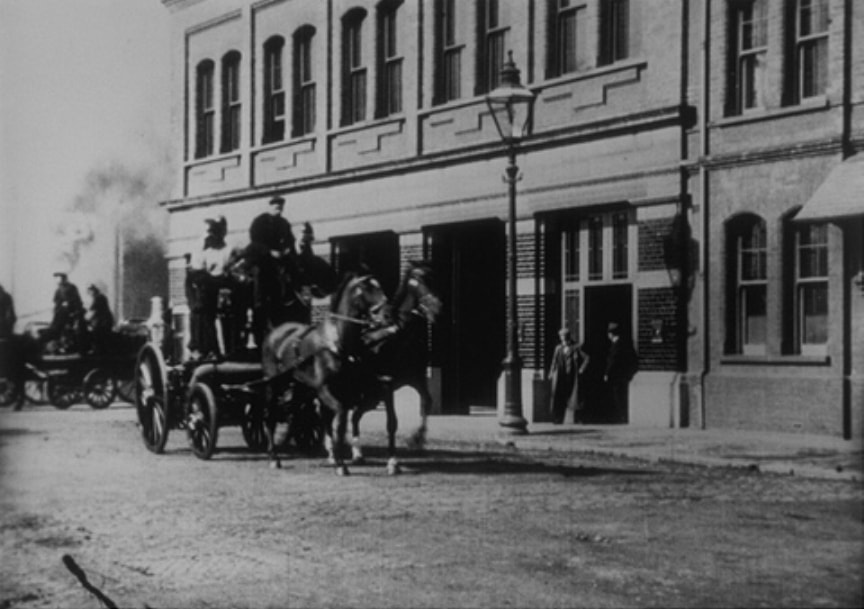Rue de Chaligny, Paris 12e - Lumière films 778, 779 & 780
This is the end of Lumière film 778, dated 1896-97. It shows the Rue de Chaligny, at the junction with the Boulevard Diderot. To the left is the maternity wing of the Hôpital Saint Antoine, to the right is the Caserne Chaligny, a fire station:
The fire station is still there, but there are new buildings opposite; the Rue de Chaligny has acquired trees:
The image from the Lumière film above is the calm conclusion to a very exciting forty seconds in which four horse-drawn fire engines race past the camera and on down the Rue de Chaligny, apparently responding to an alarm:
Less exciting but just as interesting are the people in the street. Some are attracted by the spectacle of speeding fire engines, for others the attraction is the cinematograph recording the scene, themselves included:
The commentator on the recent dvd edition of Lumière films rightly draws attention to both of these aspects, though in other respects that commentary is wide of the mark:
'Was it by chance that the operator happened to be there? We know nothing of this film, shot in Paris in 1896, but the effect created by the passage of galloping horses is impressive. The firemen's horse-drawn vehicles, in use until 1920, transported separately the ladders and the steam-powered pumps. Lumière is the clinical witness of a period, of a profession, of a place, of a tradition, unreconstituted (sans reconstitution) ...'.
'Was it by chance that the operator happened to be there? We know nothing of this film, shot in Paris in 1896, but the effect created by the passage of galloping horses is impressive. The firemen's horse-drawn vehicles, in use until 1920, transported separately the ladders and the steam-powered pumps. Lumière is the clinical witness of a period, of a profession, of a place, of a tradition, unreconstituted (sans reconstitution) ...'.
There are several clues indicating that this was not simply a chance encounter but a drama staged for the camera. Just in front of the group of people on the pavement to the left is a policeman, there to make sure no one crosses in front of the oncoming fire engines. To be noted also is the fact that the fire engines are coming from beyond the fire station's entrance, rather suggesting that they started out from the far end of the street to create for the camera a more impressive effect than if they had been manoeuvring out of the fire station entrance, the open doors of which can be seen centre-right, below:
There is further, and conclusive evidence, that this drama was staged. In the Lumière catalogue this is one of three consecutively listed films on the same subject - 'Passage des pompes' (no.778), 'Retour des pompes' (no.779), 'Un incendie' (no.780):
|
The last of these shows the firemen rescuing people from a burning building. What tells me that this isn't a genuine incident that the Lumière operator has come across by chance is that the building shown to be on fire is in fact the fire station from which the firemen have just come. I've only seen the above photogram but it is sufficient to establish a match with the inner courtyard of the caserne Chaligny, as seen in this depiction, right, of the visit by President Félix Faure to the caserne Chaligny on February 4th 1898. On that occasion several demonstrations of fire-fighting skills were staged for the President's benefit. Clearly they had done the same thing for the Cinématographe Lumière a few months before. (I had initially thought that the film was actually a record of the President's visit, but apparently all three caserne Chaligny films had already been screened by November 1897.)
A report of the President's visit was published in Le Temps (5.2.1898). |
The courtyard as it is now can be seen here, in a video of a recent open day at the fire station:
There are other films showing a fire brigade in action in the Lumière catalogue. Here are photograms from films shot in Lyon (no.76), London (no.246), Dublin (no.711) and Belfast (no.723):
I still have more work to do on these before I can say which, if any, were staged.
I am indebted for information and images to the BNF-Gallica service, the CNC Bois d'Arcy and the online Catalogue Lumière. My thanks to them. Postcards such as those I have included above can be found at Delcampe.net.
